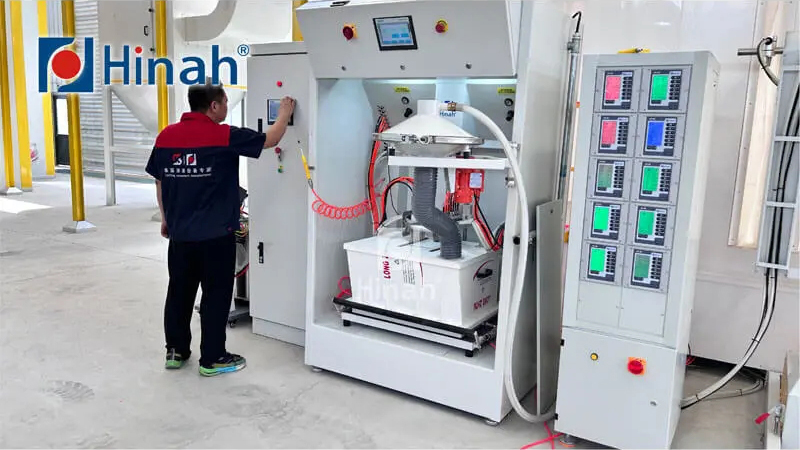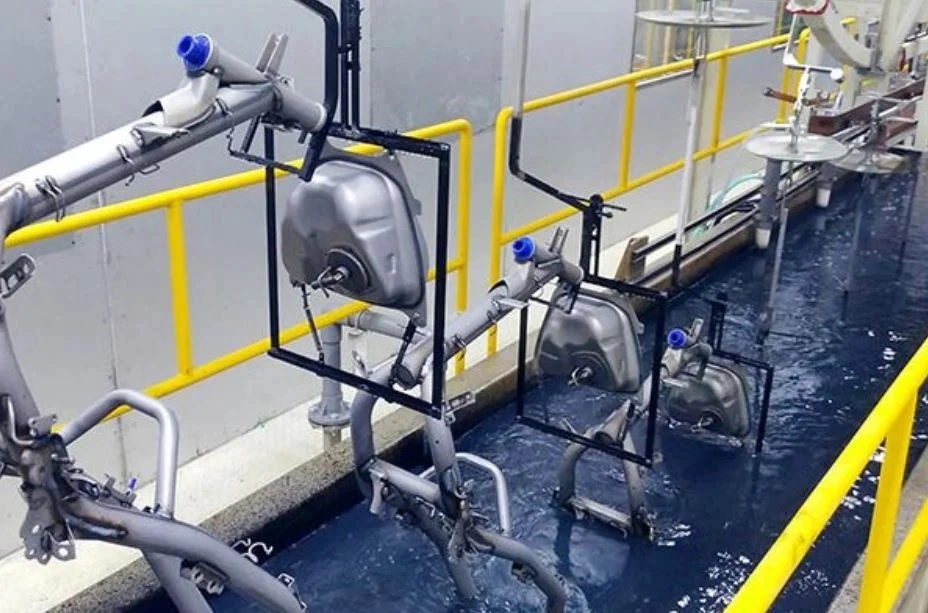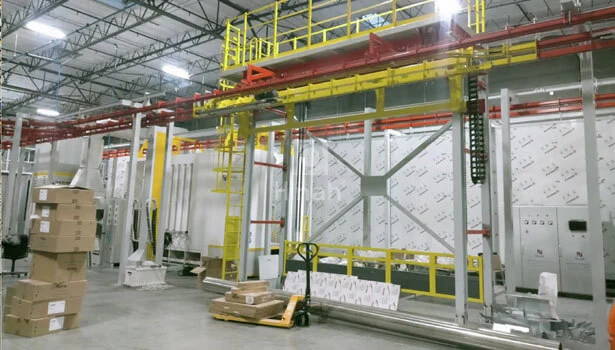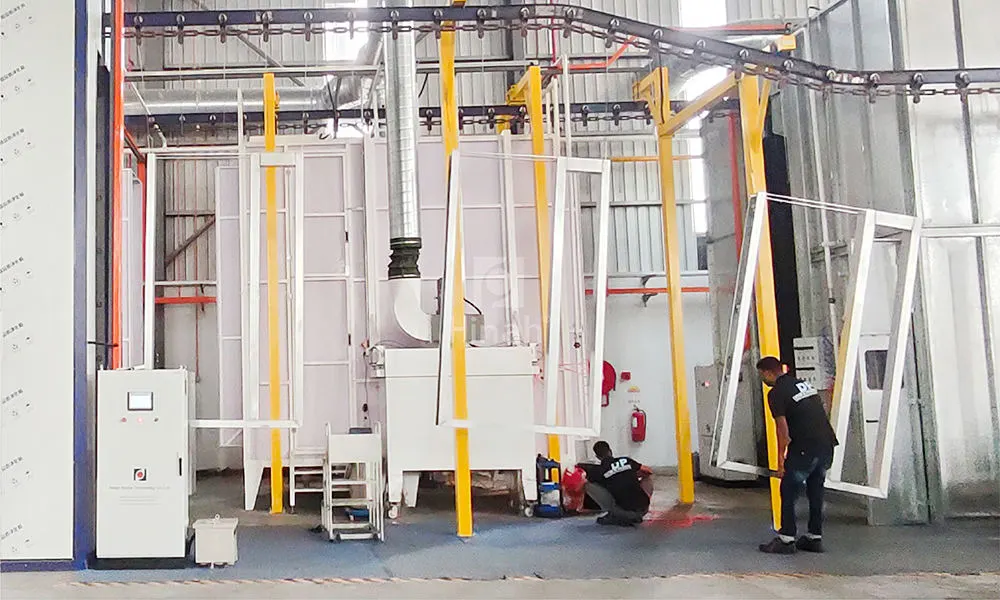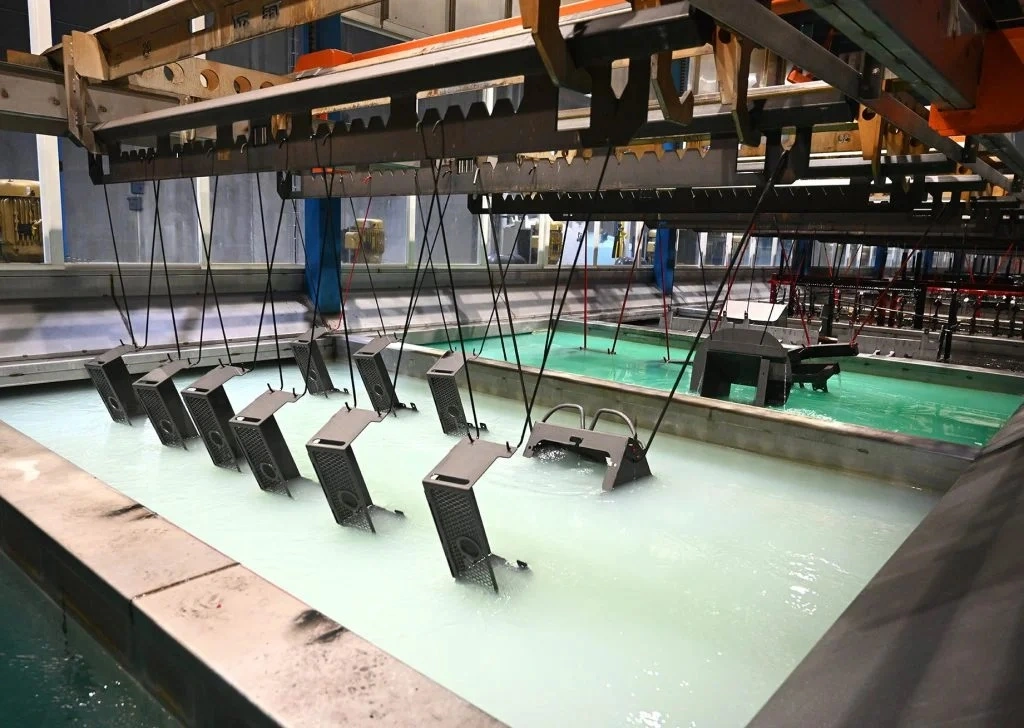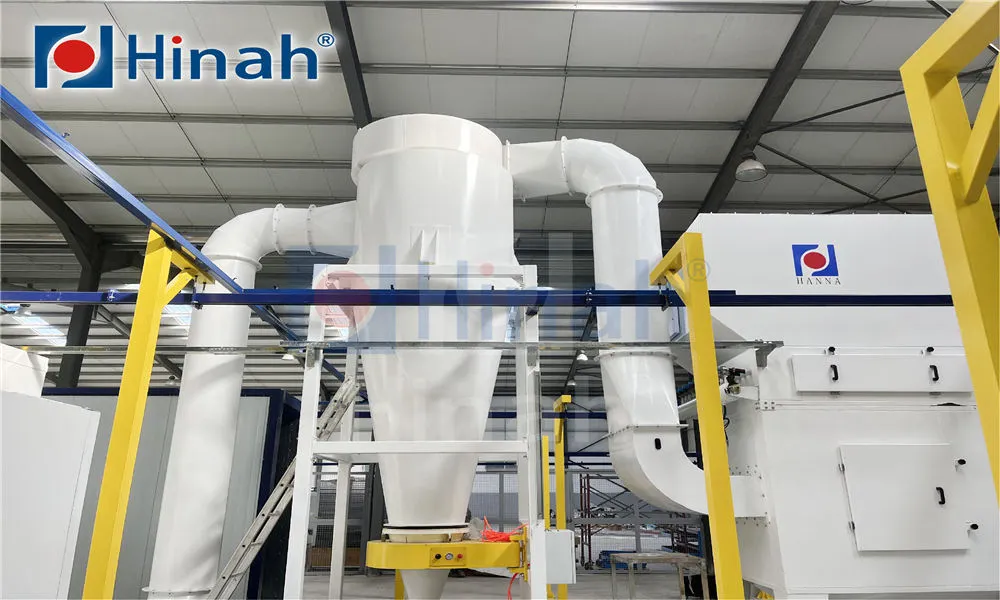In the world of industrial manufacturing and surface treatment, the Ed coating process stands out as a critical technique for protecting metal components from corrosion, wear, and environmental damage. Also known as electrodeposition coating, this method has revolutionized how industries like automotive, aerospace, and electronics ensure product longevity. If you're involved in metal fabrication or simply curious about advanced coating technologies, understanding the Ed coating process can provide valuable insights into its widespread adoption. This article delves into the essentials of the Ed coating process, covering its fundamentals, mechanisms, applications, benefits, and more, all while adhering to practical insights that align with real-world needs.
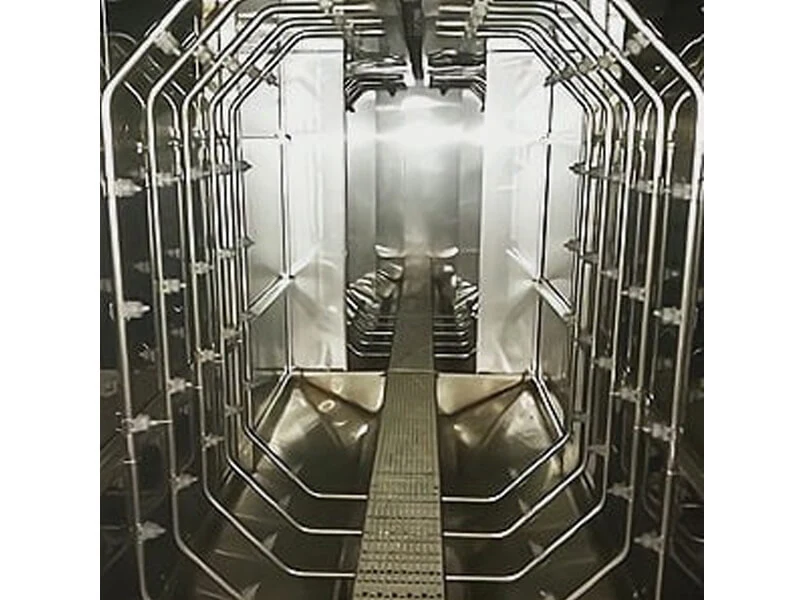
What is the Ed Coating Process?
The Ed coating process, short for electrodeposition coating, is an electrochemical method used to apply a protective or decorative layer onto metal surfaces. It involves immersing a metal part, typically made of steel or aluminum, into a water-based coating solution containing charged particles. By applying an electric current, these particles are drawn to the metal substrate, forming a uniform, adherent film. This process is highly efficient for creating thin, consistent coatings that resist chipping, scratching, and corrosion. Originally developed in the 1960s, the Ed coating process has evolved to include variations like cathodic and anodic electrodeposition, catering to different industrial requirements. Its ability to cover complex geometries and hard-to-reach areas makes it a preferred choice over traditional methods like spray painting or powder coating. In essence, the Ed coating process ensures that metal products maintain their integrity in harsh environments, reducing maintenance costs and enhancing safety.
The Science Behind the Ed Coating Process
At its core, the Ed coating process relies on principles of electrochemistry to achieve a durable finish. When a metal part is submerged in a bath containing coating materials—such as epoxy, acrylic, or other polymers—the solution is electrically charged. The part acts as an electrode (either anode or cathode, depending on the process type), and the opposing electrode completes the circuit. As current flows, ions in the solution migrate toward the metal surface, where they undergo electrochemical reactions to form a solid, continuous film. This film builds up uniformly due to the self-limiting nature of the Ed coating process; once the coating reaches a certain thickness, it insulates the surface, slowing further deposition. Key parameters, like voltage, bath temperature, and immersion time, are carefully controlled to optimize adhesion and thickness. For instance, in cathodic Ed coating, the part is the cathode, which helps prevent oxidation and improves corrosion resistance. This scientific foundation ensures that the Ed coating process produces high-quality results with minimal waste, aligning with sustainable manufacturing practices.
Key Steps in the Ed Coating Process
Implementing the Ed coating process involves a series of meticulous steps to ensure optimal performance and quality. First, surface preparation is crucial: the metal part undergoes cleaning, degreasing, and pretreatment—such as phosphating or chromating—to remove contaminants and enhance adhesion. Next, the part is immersed in the electrodeposition bath, where the actual Ed coating process takes place. Electric current is applied for a specified duration, typically a few minutes, allowing the coating to form evenly. After deposition, the part is rinsed to remove excess solution and then cured in an oven at high temperatures (around 150-200°C) to cross-link the coating and achieve full hardness. Finally, quality checks, such as thickness measurements and adhesion tests, are performed to verify compliance with industry standards. This step-by-step approach in the Ed coating process minimizes defects like pinholes or uneven coverage, making it reliable for high-volume production. By following these stages, manufacturers can achieve consistent results that meet stringent specifications for durability and aesthetics.
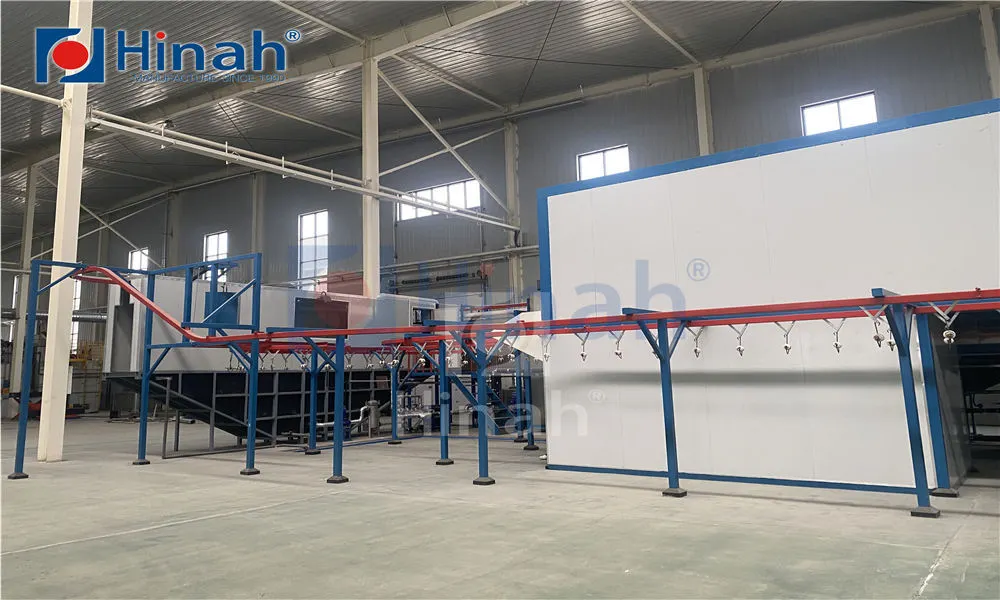
Applications of the Ed Coating Process Across Industries
The Ed coating process is widely utilized across various sectors due to its versatility and effectiveness. In the automotive industry, it is a staple for coating car bodies, chassis, and engine parts, providing a robust base for subsequent paint layers and shielding against rust and UV radiation. The aerospace sector relies on the Ed coating process for aircraft components, where weight savings and corrosion resistance are critical for safety and performance. Electronics manufacturers use it to protect circuit boards and enclosures from moisture and electrical interference, ensuring device reliability. Additionally, the construction industry applies the Ed coating process to structural steel, fencing, and fasteners, extending their lifespan in outdoor environments. Even household appliances, like refrigerators and washing machines, benefit from this process to maintain a sleek appearance and resist daily wear. The adaptability of the Ed coating process to different materials and shapes—from intricate parts to large assemblies—underscores its importance in modern manufacturing, driving innovation in product design and sustainability.
Advantages of the Ed Coating Process
One of the main reasons for the popularity of the Ed coating process is its numerous advantages over alternative coating methods. Firstly, it offers exceptional uniformity, as the electrochemical nature ensures even coverage on complex geometries, edges, and recessed areas that other techniques might miss. This leads to superior corrosion protection, often extending the life of metal products by decades. Secondly, the Ed coating process is highly efficient, with minimal material waste—overspray is reduced, and unused coating can often be recycled. It also supports environmental goals by typically using water-based solutions that emit fewer volatile organic compounds (VOCs) compared to solvent-based paints. Cost-effectiveness is another benefit; although initial setup costs can be high, the long-term savings in maintenance and replacement make the Ed coating process economical for large-scale operations. Moreover, it enhances safety by reducing worker exposure to hazardous chemicals and fire risks. Overall, the Ed coating process aligns with industry trends toward automation and green manufacturing, making it a forward-thinking choice for businesses aiming to improve their ecological footprint and product quality.
Challenges and Considerations in the Ed Coating Process
Despite its benefits, the Ed coating process comes with certain challenges that require careful management. For example, controlling process parameters like bath composition and current density is essential to avoid defects such as blistering or poor adhesion. Environmental regulations may impose restrictions on waste disposal from the coating bath, necessitating proper treatment systems. Additionally, the initial investment in equipment—such as tanks, rectifiers, and curing ovens—can be substantial, potentially deterring small businesses. The Ed coating process also demands skilled operators to monitor quality and troubleshoot issues, which adds to labor costs. However, advancements in automation and real-time monitoring are mitigating these drawbacks, making the process more accessible. By addressing these considerations through training and technology upgrades, companies can maximize the benefits of the Ed coating process while minimizing risks.
Future Trends in the Ed Coating Process
The Ed coating process is continuously evolving, driven by technological innovations and market demands. Trends include the development of eco-friendly coatings with lower environmental impact, such as bio-based polymers, and the integration of IoT sensors for real-time process optimization. Automation and robotics are becoming more prevalent, enhancing precision and reducing human error in the Ed coating process. Furthermore, research into nanocomposites and smart coatings could lead to functionalities like self-healing or color-changing properties. As industries push for greater sustainability and efficiency, the Ed coating process is poised to adapt, ensuring its relevance in next-generation manufacturing.
In conclusion, the Ed coating process is a cornerstone of modern metal protection, offering a blend of durability, efficiency, and versatility. By understanding its principles, applications, and advancements, professionals can leverage this technology to drive innovation and sustainability in their fields.
Frequently Asked Questions About the Ed Coating Process
Q1: What is the primary purpose of the Ed coating process?
A1: The primary purpose of the Ed coating process is to apply a uniform, protective layer to metal surfaces, enhancing corrosion resistance, durability, and aesthetic appeal. It helps prevent degradation from environmental factors like moisture, chemicals, and UV exposure, thereby extending the lifespan of metal components in industries such as automotive and construction.
Q2: How does the Ed coating process differ from powder coating?
A2: The Ed coating process uses an electrochemical method where charged particles in a water-based solution are deposited onto a metal surface via electric current, resulting in a thin, even film. In contrast, powder coating involves applying dry powder electrostatically and then curing it with heat. The Ed coating process often provides better coverage for complex shapes and superior corrosion protection, while powder coating is typically thicker and more suitable for decorative finishes.
Q3: What types of metals are suitable for the Ed coating process?
A3: The Ed coating process is most commonly used on ferrous metals like steel and iron, as well as non-ferrous metals such as aluminum. These materials respond well to the electrochemical deposition, ensuring strong adhesion and effective protection. However, pretreatment steps may vary based on the metal type to optimize performance.
Q4: Are there environmental concerns associated with the Ed coating process?
A4: While the Ed coating process is generally more environmentally friendly than solvent-based methods due to its use of water-based solutions and reduced VOC emissions, it still requires careful waste management. Spent coating baths and rinse water may contain heavy metals or chemicals, necessitating proper treatment and disposal to comply with environmental regulations. Advances in green chemistry are helping to minimize these impacts.
Q5: How long does the Ed coating process take from start to finish?
A5: The duration of the Ed coating process varies depending on factors like part size, coating thickness, and specific process parameters. Typically, it can take anywhere from 30 minutes to a few hours, including pretreatment, electrodeposition, rinsing, and curing stages. For high-volume production, automated lines can streamline this to maintain efficiency.


